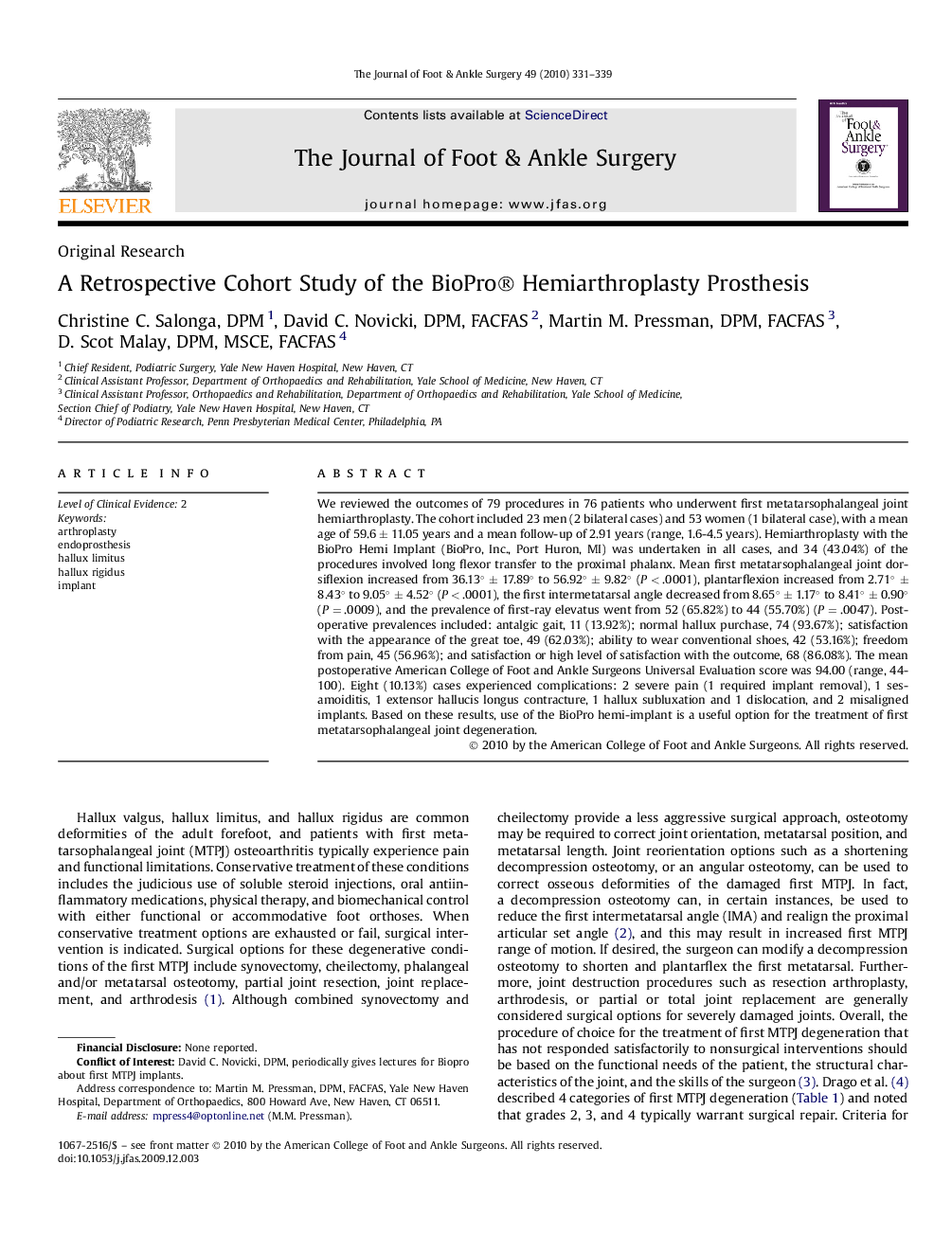| Article ID | Journal | Published Year | Pages | File Type |
|---|---|---|---|---|
| 2713402 | The Journal of Foot and Ankle Surgery | 2010 | 9 Pages |
We reviewed the outcomes of 79 procedures in 76 patients who underwent first metatarsophalangeal joint hemiarthroplasty. The cohort included 23 men (2 bilateral cases) and 53 women (1 bilateral case), with a mean age of 59.6 ± 11.05 years and a mean follow-up of 2.91 years (range, 1.6-4.5 years). Hemiarthroplasty with the BioPro Hemi Implant (BioPro, Inc., Port Huron, MI) was undertaken in all cases, and 34 (43.04%) of the procedures involved long flexor transfer to the proximal phalanx. Mean first metatarsophalangeal joint dorsiflexion increased from 36.13° ± 17.89° to 56.92° ± 9.82° (P < .0001), plantarflexion increased from 2.71° ± 8.43° to 9.05° ± 4.52° (P < .0001), the first intermetatarsal angle decreased from 8.65° ± 1.17° to 8.41° ± 0.90° (P = .0009), and the prevalence of first-ray elevatus went from 52 (65.82%) to 44 (55.70%) (P = .0047). Postoperative prevalences included: antalgic gait, 11 (13.92%); normal hallux purchase, 74 (93.67%); satisfaction with the appearance of the great toe, 49 (62.03%); ability to wear conventional shoes, 42 (53.16%); freedom from pain, 45 (56.96%); and satisfaction or high level of satisfaction with the outcome, 68 (86.08%). The mean postoperative American College of Foot and Ankle Surgeons Universal Evaluation score was 94.00 (range, 44-100). Eight (10.13%) cases experienced complications: 2 severe pain (1 required implant removal), 1 sesamoiditis, 1 extensor hallucis longus contracture, 1 hallux subluxation and 1 dislocation, and 2 misaligned implants. Based on these results, use of the BioPro hemi-implant is a useful option for the treatment of first metatarsophalangeal joint degeneration.
